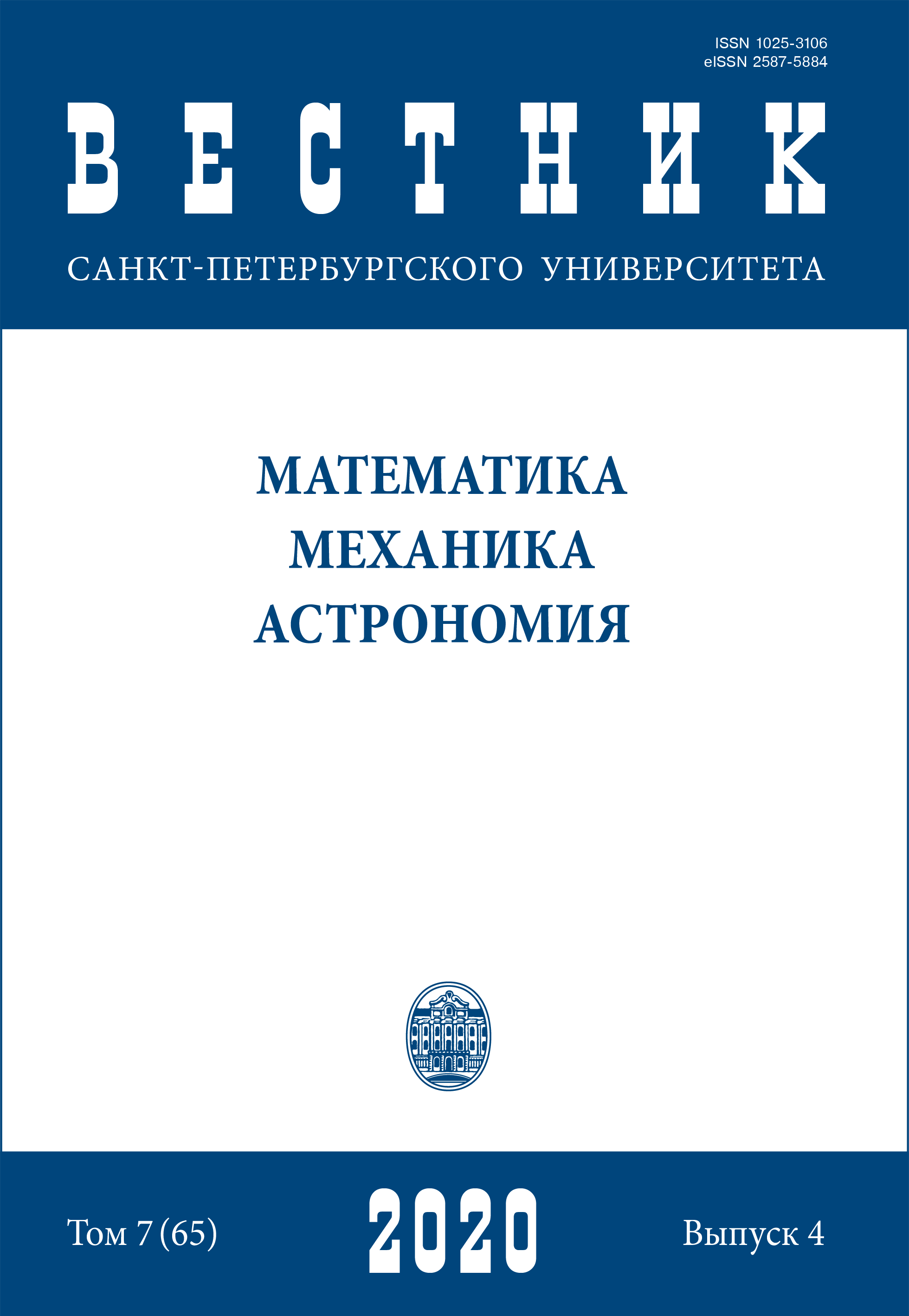Minimal velocity surface in the restricted circular Three-Body-Problem
DOI:
https://doi.org/10.21638/spbu01.2020.413Abstract
In the framework of the restricted circular Three-Body-Problem, the concept of the minimum velocity surface S is introduced, which is a modification of the zero-velocity surface (Hill surface). The existence of Hill surface requires occurrence of the Jacobi integral. The minimum velocity surface, other than the Jacobi integral, requires conservation of the sector velocity of a zero-mass body in the projection on the plane of the main bodies motion. In other words, there must exist one of the three angular momentum integrals. It is shown that this integral exists for a dynamic system obtained after a single averaging of the original system by longitude of the main bodies. Properties of S are investigated. Here is the most significant. The set of possible motions of the zero-mass body bounded by the surface S is compact. As an example the surfaces S for four small moons of Pluto are considered in the framework of the averaged problem Pluto — Charon — small satellite. In all four cases, S represents a topological torus with small cross section, having a circumference in the plane of motion of the main bodies as the center line.Keywords:
restricted circular Three-Body-Problem, zero velocity surface, region of feasibility
Downloads
Download data is not yet available.
References
Литература
1. Субботин М. Ф. Введение в теоретическую астрономию. М.: Наука, 1968.
2. Себехей В. Теория орбит. М.: Наука, 1982.
3. Лукьянов Л. Г., Ширмин Г. И. Лекции по небесноймеханике: Учеб. пособ. для вузов. Алматы: Эверо, 2009.
4. Антонов В. А., Никифоров И. И., Холшевников К. В. Элементы теории гравитационного потенциала и некоторые случаи его явного выражения. СПб.: Изд-во С.-Петерб. ун-та, 2008.
5. Vashkovjak M. A. On the stability of circular asteroid orbits in an N-planetary system // Celest. Mech. 1976. Vol. 13. P. 313–324.
6. Вашковьяк М. А. Метод вычисления вековых возмущенийастероидных орбит // Космич. исслед. 1986. Vol. 24, №4. С. 513–526.
7. Brozovi´c M., Showalter M. R., Jacobson R. A., Buie M. W. The orbits and masses of satellites of Pluto // Icarus. 2015. Vol. 246. P. 317–329.
References
1. Subbotin M. F., Introduction to theoretical astronomy (Nauka Publ., Moscow, 1968). (In Russian)
2. Szebehely V., Theory of orbits (Academic Press, New York, London, 1967).
3. Lukianov L. G., Shirmin G. I., Lectures on celestial mechanics (Evero Publ., Almaty, 2009). (In Russian)
4. Antonov V. A., Nikiforov I. I., Kholshevnikov K. V., Theory of gravitational potential elements, and several cases of its explicit expression (St. Petersburg University Press, St. Petersburg, 2008). (In Russian)
5. Vashkovjak M. A., “On the stability of circular asteroid orbits in an N -planetary system”, Celest. Mech. 13, 313–324 (1976). https://doi.org/10.1007/BF01228649
6. Vashkovjak M. A., “Method for calculating secular perturbations of asteroid orbits”, Cosmic Research 24 (4), 513–526 (1986). (In Russian)
7. Brozovi´c M., Showalter M. R., Jacobson R. A., Buie M. W., “The orbits and masses of satellites of Pluto”, Icarus 246, 317–329 (2015).
Downloads
Published
2020-12-27
How to Cite
Kholshevnikov, K. V., & Titov, V. B. (2020). Minimal velocity surface in the restricted circular Three-Body-Problem. Vestnik of Saint Petersburg University. Mathematics. Mechanics. Astronomy, 7(4), 734–742. https://doi.org/10.21638/spbu01.2020.413
Issue
Section
Astronomy
License
Articles of "Vestnik of Saint Petersburg University. Mathematics. Mechanics. Astronomy" are open access distributed under the terms of the License Agreement with Saint Petersburg State University, which permits to the authors unrestricted distribution and self-archiving free of charge.




